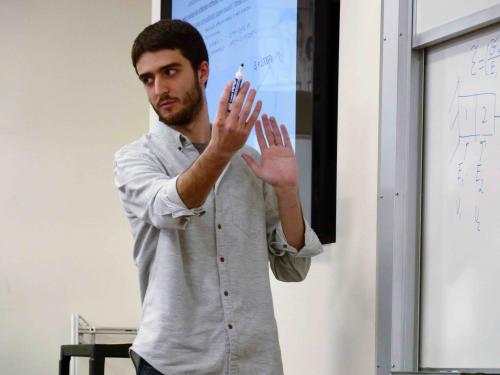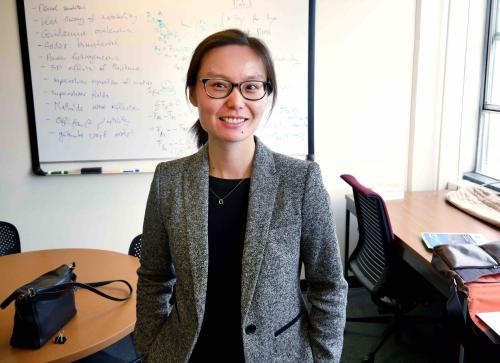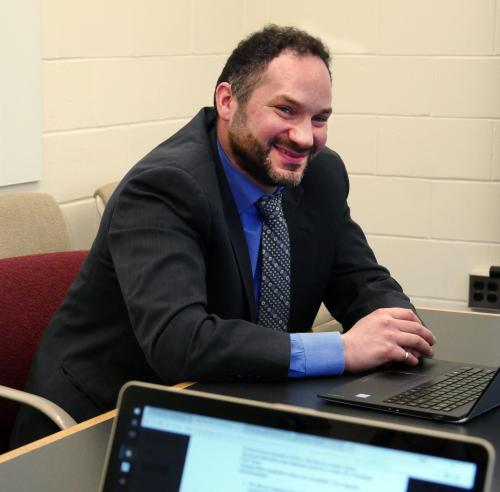Alumni Spotlights 2018
 Andrew Shakalis
Andrew Shakalis
M.Eng.’16
Tell us about your current work and projects.
I’m a senior engineer at Thornton Tomasetti, in the Weidlinger Applied Science practice, working on undersea acoustics problems. The work is more based in engineering mechanics and physics/theory, rather than a strict design-sense kind of work. The applied science practice is part of the ‘cutting edge’ R&D groups within the discipline of mechanics and materials.
Why did you choose Cornell?
Cornell stuck out to me not only because of the proximity to home (NYC), but also had tremendous architecture and physics programs. I was still on the fence on where to go, and decided to apply to the engineering school. I had no idea about what to study when I got to Cornell. But, thankfully, the first few years allow an undergraduate to find out what they enjoy most. I sat in on several architecture classes, but found myself drawn to the “structural concepts” courses they had. Similarly, physics classes were flashy, but sometimes very unintuitive. So, civil wound up being a combination of interests in architecture and physics. It’s a common enough compromise, so I’ve seen.
Was there a particular professor who inspired you?
Within CEE, Associate Professor [Derek] Warner’s Solid Mechanics classes kind of sealed the deal that I would enjoy working in engineering mechanics. Though not a class, the two years I spent in the Bovay Lab was extremely useful in creating a practical skillset to go along with the knowledge of some esoteric mechanics subjects. To that extent, the now retired Tim Bond was a great inspiration, too, because of his thoughtful approach towards teaching—letting the students fail first, so that what they’re learning has immediate practical value. Tim (and the lab as a whole) provided a design and analysis experience outside of classwork that was not only interesting, but also of great importance, and with an impeccable group of people.
 Jing Zhuang
Jing Zhuang
B.S. ’10
“They grow up so fast” said Jing Zhuang PE, is referring to her latest project: Equinox Tower at 35 Hudson Yards, part of the largest private real estate development in the history of the United States, located over a working rail yard on Manhattan’s west side. Zhuang is a senior structural engineer at Skidmore Owings and Merrill (SOM) in New York. On Thursday, October 5, 2017, Zhuang visited Assistant Professor David Kammer’s Modern Structures class where she gave a lecture titled “Tracing the Evolution of Structural Systems.” Zhuang says: “I think it’s important to learn about structural engineering history so that we are aware of solutions engineers found for problems that are still relevant today. I hope that knowing about these past solutions will spark new ideas that build upon them and advance our field.” Later that day Zhuang gave an informal career conversation talk with undergrad and graduate students
Why did you choose Cornell?
I was interested in both architecture and engineering and chose Cornell because it has excellent programs in both. I found that Cornell was very accommodating in allowing me to diversify my coursework, true to its “any person, any study” motto.
Could you expand upon the quote from your Career Conversations talk: “When you are in school you have a problem set, you’re done with the work. But when you are working in the field, you have to be flexible.”
I think this is reflected more at the architecture school, where an assignment goes through multiple iterations and you are continuously working on it. I found that this has also been the case at work. It might be a little frustrating for new engineers at first, to see parts of their work become irrelevant as new information comes in, when other trades have clashing requirements, or a client changes their mind. It can be hard to not take it personally, but it is all part of the process for delivering a complete, coordinated project.
Can you talk a little bit about a current project that you are working on?
I’ve been working through the shop drawings and day-to-day construction questions now, after analyzing, designing, and documenting for the last couple of years. It’s been grueling but we can’t wait for the structure to top out next spring. We’re about 50% of the way there in terms of construction (the final structure will be 1,000 feet above the platform covering the railyard).
 Seth Condell
Seth Condell
M.Eng. ’98
Tell us about your current work and projects.
I currently have several roles at Parsons. I have an operational role and business development role as the NY/NJ Regional Bridge Practice Lead, with a staff of roughly 60 engineers and CADD staff. In this role I am responsible for the technical excellence of our project delivery teams, as well as the profit and loss of our regional bridge practice. I also have a project management role and in this capacity I am the design manager for the $1.5B replacement of the Goethals Bridge between Elizabeth, NJ, and Staten Island, NY. The project is replacing the 1928 steel cantilever truss, the first bridge built by the Port Authority of New York and New Jersey, with a dual cable stayed bridge, totally approximately 7,300 feet in length from end to end. I am particularly passionate about the project, because when I was an M.Eng. student at Cornell (1997-98), our design project was in fact the design of the Goethals Bridge replacement. So in a sense, I have been tied to the project since my time at Cornell and I’m very excited, proud, and also humbled to be leading a great team to effectuate positive change in the region’s infrastructure network.
Why did you choose Cornell?
Having a strong background in science and mathematics, engineering seemed a natural career for me. Also, having grown up building our house and enjoying putting things together, taking them apart, and being the son of a DIY father, building was always a part of my life. I think that having that hands-on experience and enjoying being able to look back at something physical that I had a part in creating drew me to the practical design side of engineering. Cornell’s M.Eng. program was centered around a design project which held an attraction for me as compared to a M.S. program that was solely centered around theory.
Was there a particular professor who inspired you?
CEE classes were great, and the professors excellent, of course, but I very much enjoyed the teamwork and comradery of the design project. At that time, the design project was a group exercise that engaged the structures, geotech, and management students. The open ended nature of the project allowed me to challenge myself to conceive of solutions, coordinate with classmates and tackle a real-world problem—one that I have the good fortune to see coming to fruition today.

